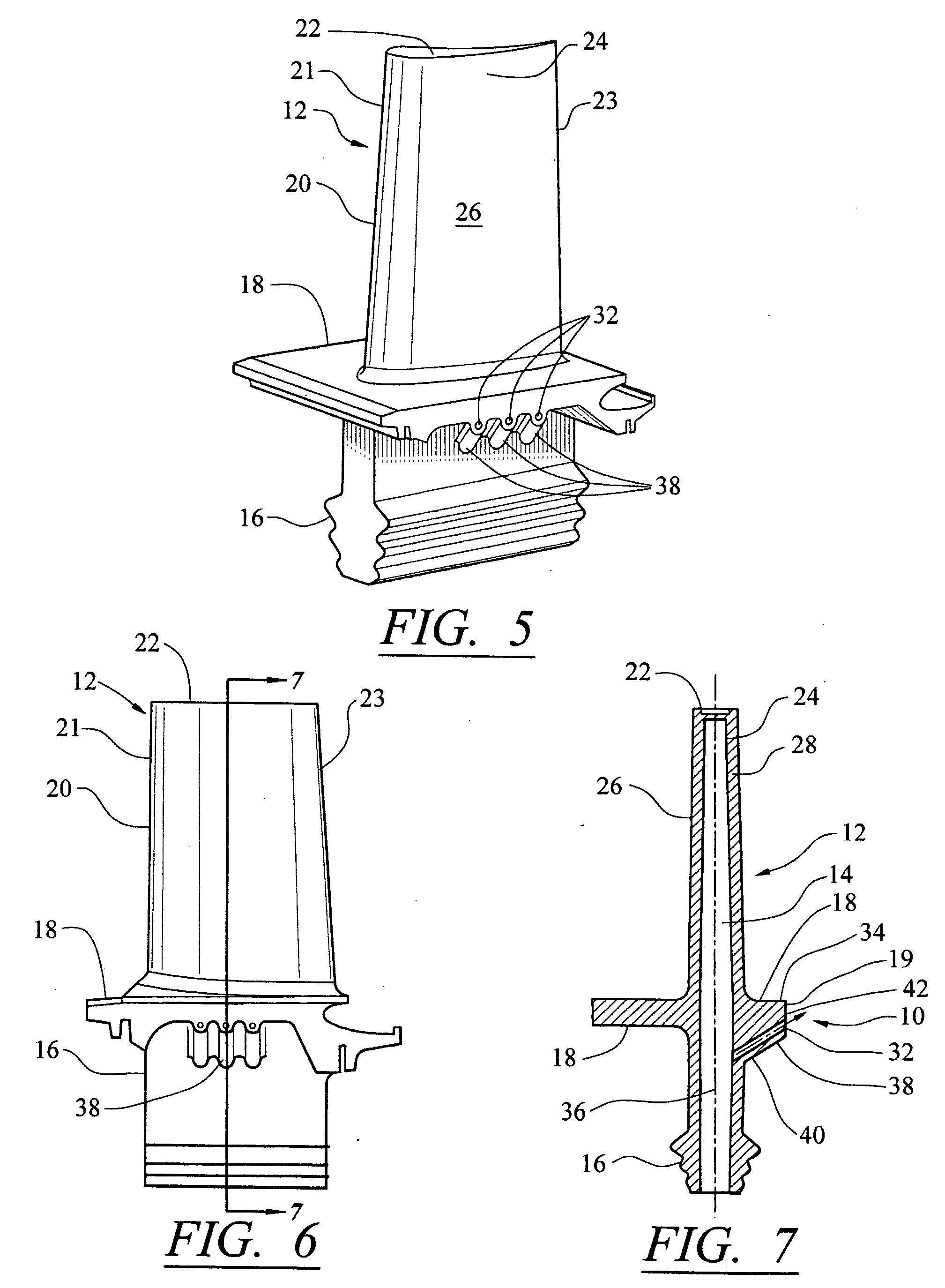Cooling system for a platform of a turbine blade
a cooling system and turbine blade technology, applied in the field of turbine blades, can solve the problems of reducing the useful affecting the service life so as to reduce the likelihood of cracking of the turbine blade, reduce the stress, and increase the cooling capacity of the internal cooling system.
- Summary
- Abstract
- Description
- Claims
- Application Information
AI Technical Summary
Benefits of technology
Problems solved by technology
Method used
Image
Examples
Embodiment Construction
[0020] This invention is directed to a turbine blade cooling system 10 for turbine blades 12 used in turbine engines, as shown in FIGS. 5-8. In particular, turbine blade cooling system 10 is directed to a platform cooling system 10 located in a platform 18, as shown in FIGS. 5-8, extending between a cooling cavity 14 and an outer surface 19 of the platform 18 for removing heat from the platform during operation of a turbine engine in which the turbine blade 12 is positioned.
[0021] As shown in FIG. 5, the turbine blade 12 may be formed from a root 16 having a platform 18 and a generally elongated blade 20 coupled to the root 16 at the platform 18. The turbine blade 12 may have a leading edge 21 and a trailing edge 23. The turbine blade 12 may also include a tip 22 at an end of the elongated blade 20 generally opposite the root 16 and the platform 18. The elongated blade 20 may be formed from an outer wall 24 adapted for use in a turbine engine 12, for example, in a first stage of an...
PUM
 Login to View More
Login to View More Abstract
Description
Claims
Application Information
 Login to View More
Login to View More - R&D
- Intellectual Property
- Life Sciences
- Materials
- Tech Scout
- Unparalleled Data Quality
- Higher Quality Content
- 60% Fewer Hallucinations
Browse by: Latest US Patents, China's latest patents, Technical Efficacy Thesaurus, Application Domain, Technology Topic, Popular Technical Reports.
© 2025 PatSnap. All rights reserved.Legal|Privacy policy|Modern Slavery Act Transparency Statement|Sitemap|About US| Contact US: help@patsnap.com



